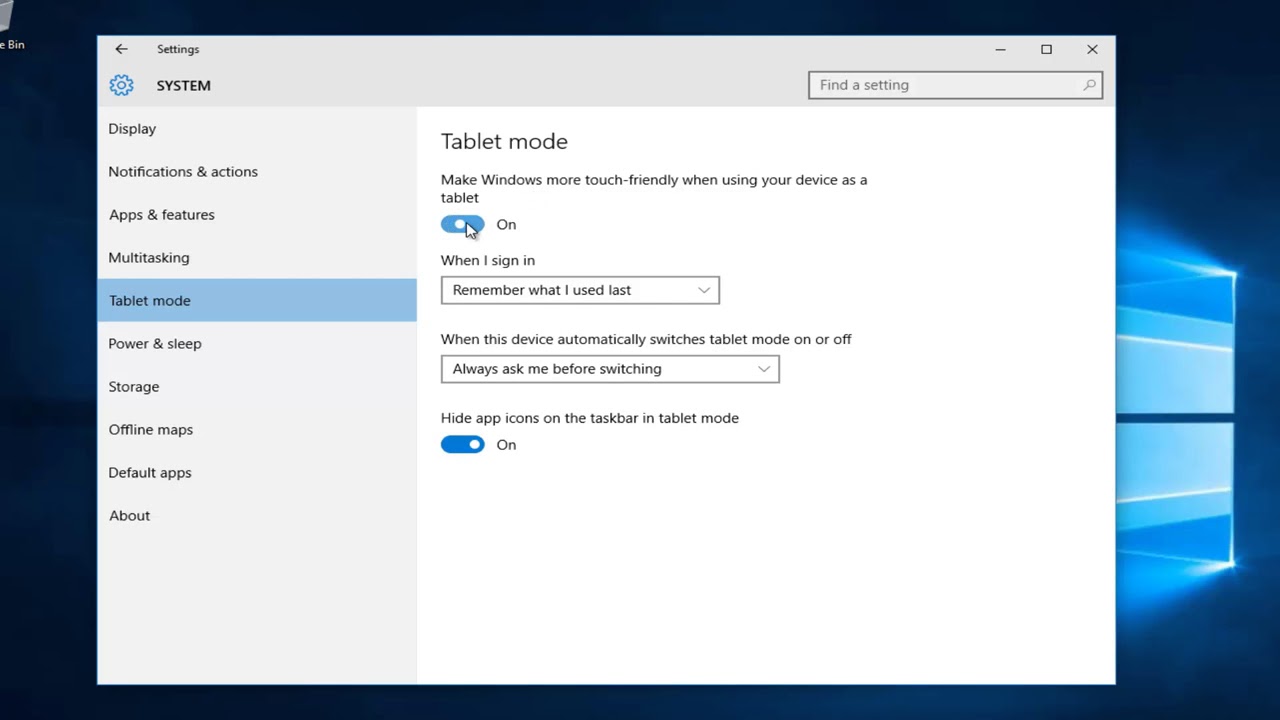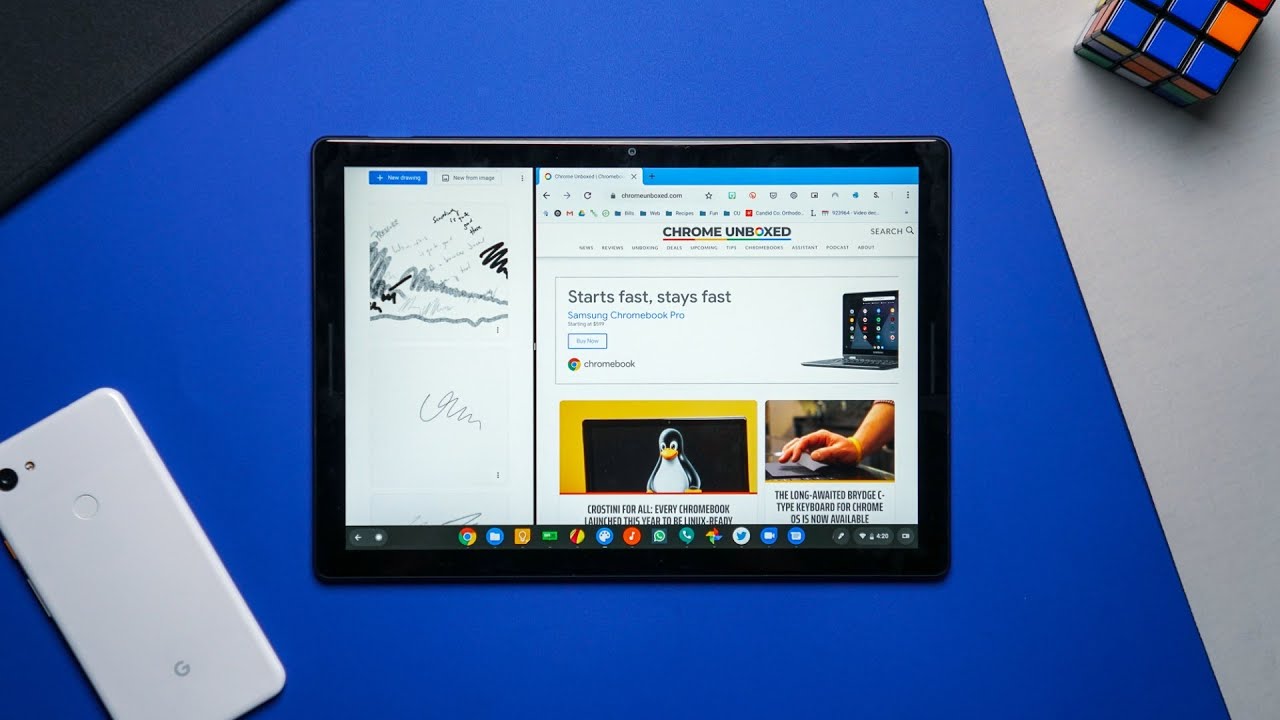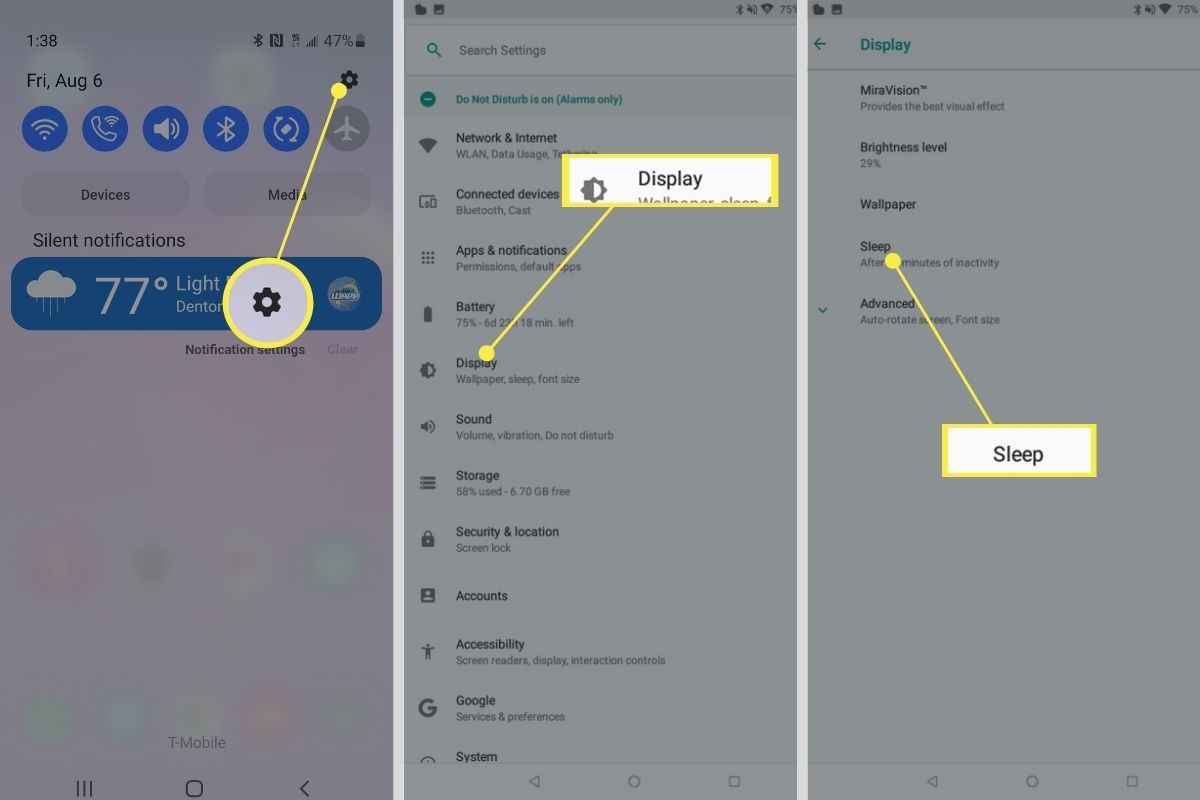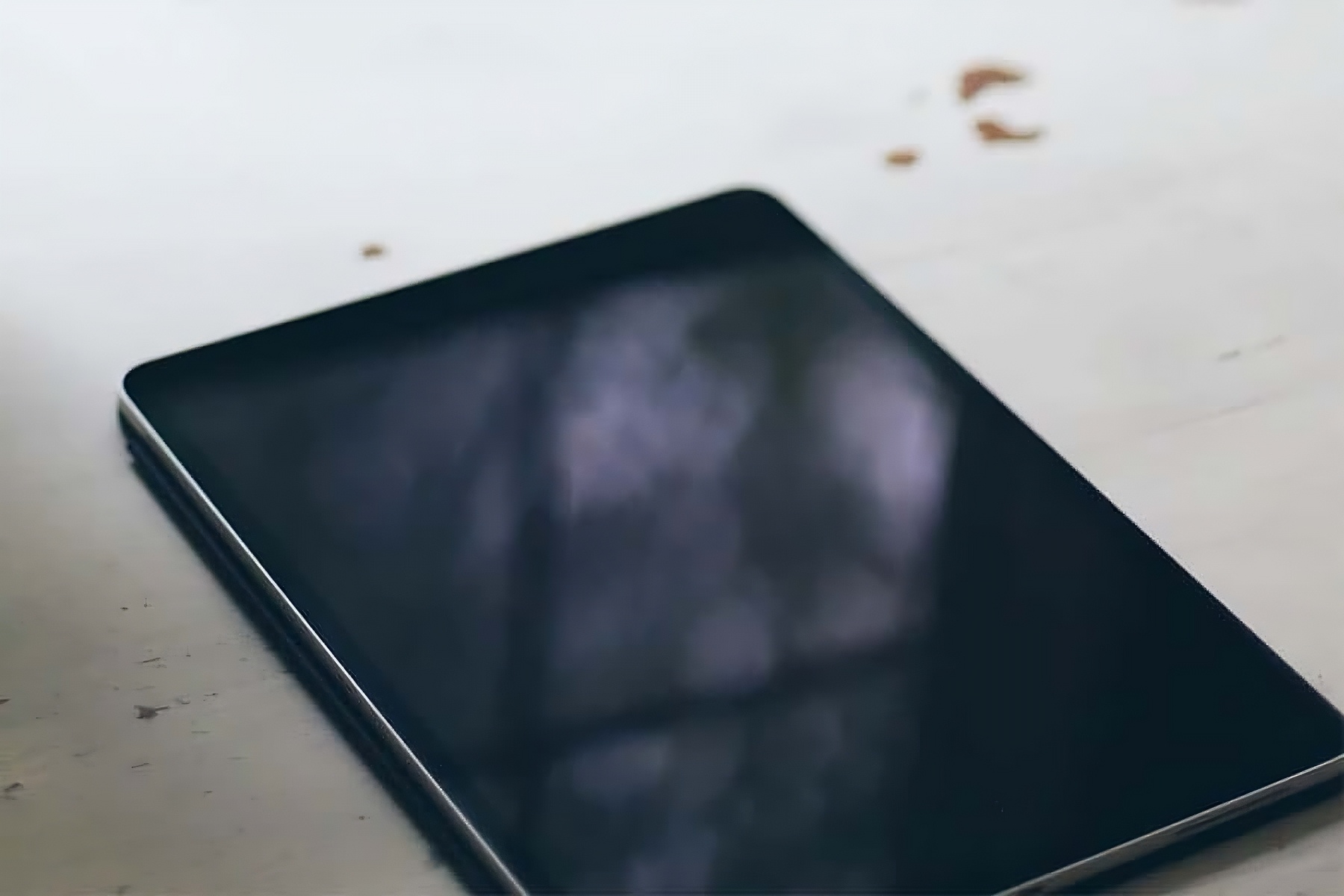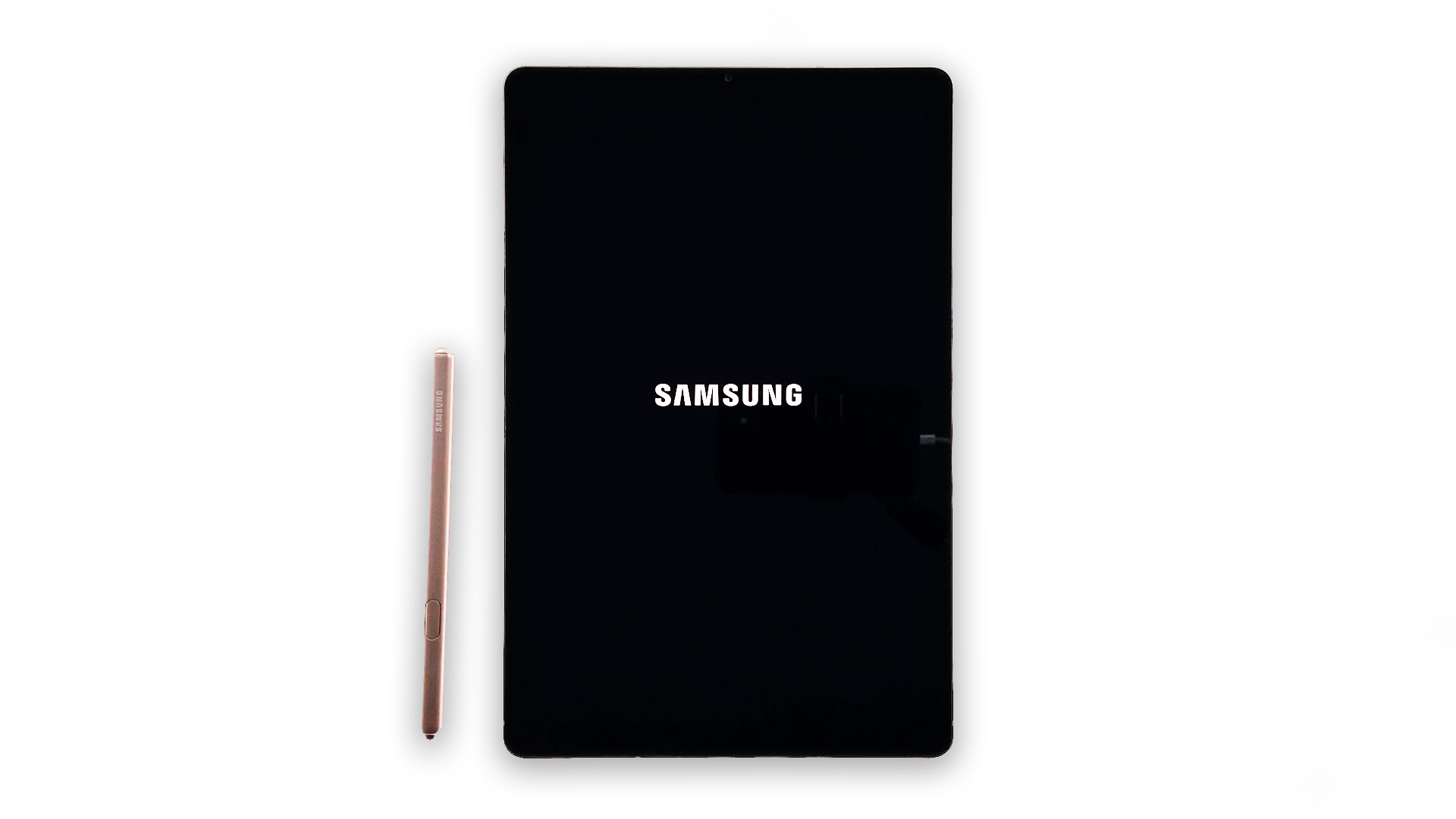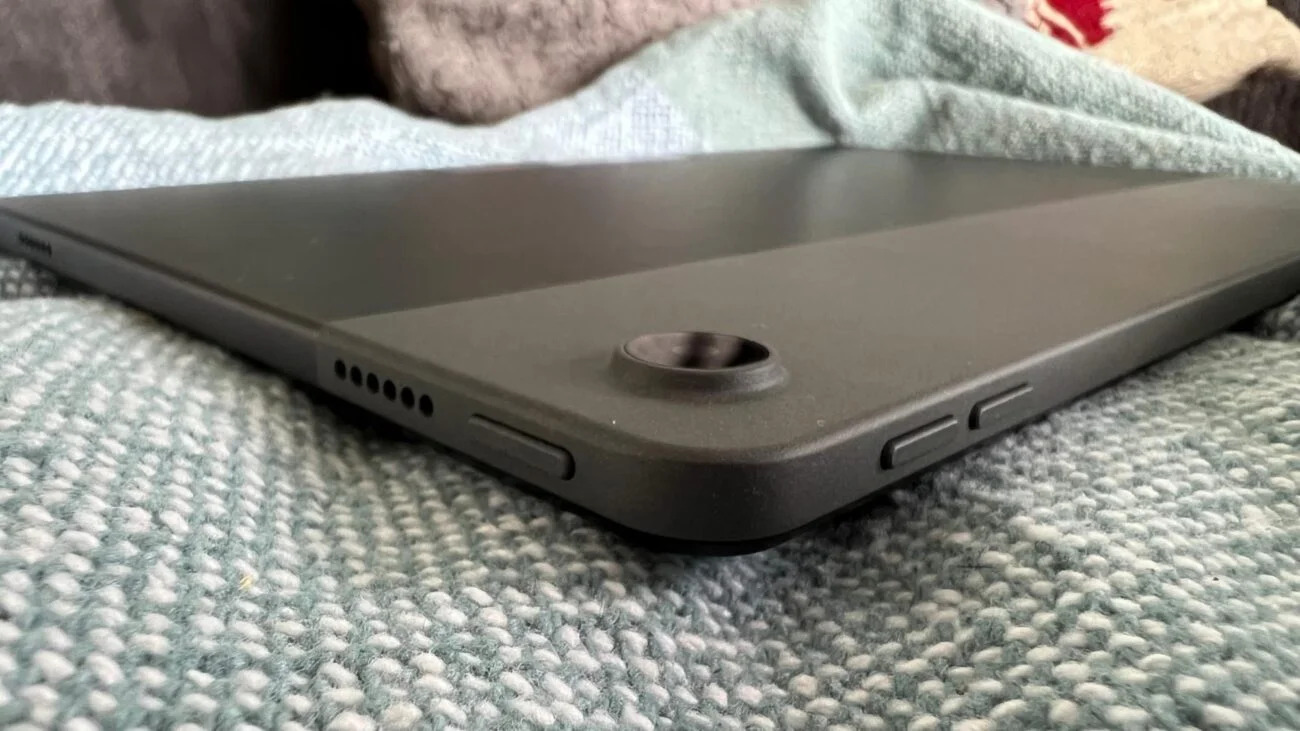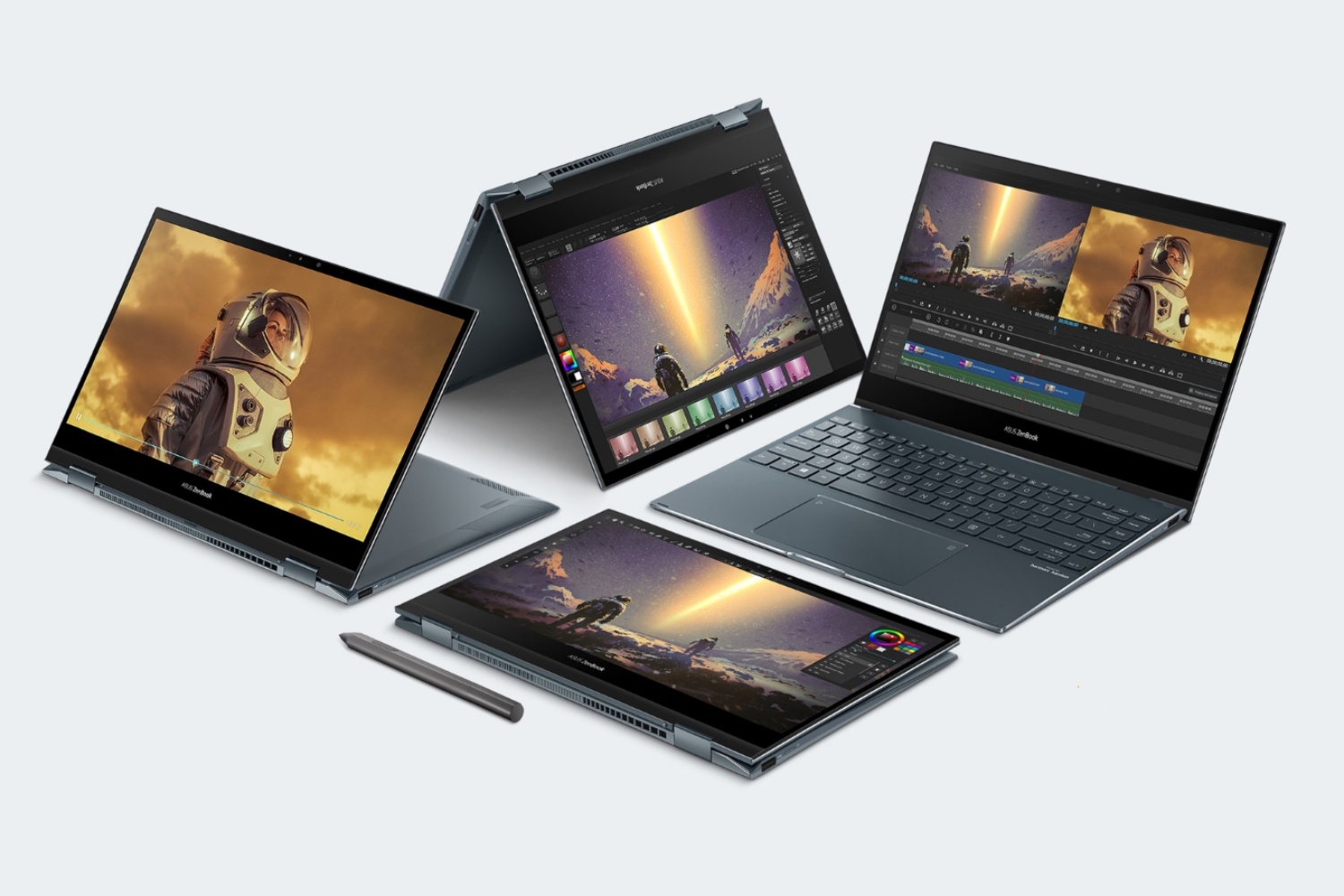What is Tablet Mode?
Tablet Mode is a feature in Windows 10 that optimizes the operating system for touch-enabled devices, such as tablets and 2-in-1 convertible laptops. When Tablet Mode is enabled, the Start Menu expands to fullscreen, the taskbar buttons are spaced out for easy tapping, and apps open in a fullscreen mode by default. These adjustments make using Windows 10 on a touchscreen device more intuitive and convenient.
Tablet Mode provides a more immersive experience, allowing you to interact with your device using touch gestures, like swiping, tapping, and pinching. It also enables virtual on-screen keyboards for text input, making it simpler to use your device without a physical keyboard. This mode is especially useful when you are using your device in tablet form, without connecting an external keyboard or mouse.
However, there may be instances when you prefer to turn off Tablet Mode. For example, if you are using a 2-in-1 device with a detachable keyboard, you may want to switch to Desktop Mode when you reattach the keyboard. Additionally, some desktop applications and games may not function optimally in Tablet Mode due to the fullscreen nature of the interface.
Fortunately, Windows 10 offers several methods to turn off Tablet Mode and switch back to the traditional Desktop Mode. In the following sections, we will explore step-by-step guides on how to disable Tablet Mode using various methods, ensuring that you can seamlessly transition between modes based on your device usage and preferences.
When do you need to turn off Tablet Mode?
While Tablet Mode can enhance the touch-centric experience on Windows 10 devices, there are situations where you may want to turn it off and switch back to Desktop Mode. Here are a few scenarios where disabling Tablet Mode might be necessary:
- Using a 2-in-1 device with a keyboard: If you are using a 2-in-1 convertible device with a detachable keyboard, such as a Microsoft Surface or HP Spectre x360, you may prefer to switch to Desktop Mode when you reattach the keyboard. This allows for a more traditional computing experience, with the ability to use a physical keyboard and mouse.
- Running desktop applications: Although many modern apps from the Microsoft Store are optimized for Tablet Mode, some desktop applications might not function optimally when in fullscreen mode. Certain software, such as advanced graphic design programs or video editing tools, are better suited for Desktop Mode where you have access to the complete window interface and precise mouse inputs.
- Gaming: If you are a gamer, you may find that certain games are incompatible or have limited functionality in Tablet Mode. Some games require precise mouse movements or unique key combinations that are only available in Desktop Mode. Switching to Desktop Mode ensures the full compatibility and optimal gaming experience.
- Multitasking and productivity: If you frequently work with multiple applications open simultaneously, Desktop Mode provides a more efficient environment. In Tablet Mode, apps open in fullscreen, making it difficult to view and manage multiple windows side by side. Being able to resize and arrange windows freely in Desktop Mode is preferable for multitasking and productivity.
By understanding the situations where turning off Tablet Mode is beneficial, you can make the most out of your Windows 10 device and easily switch between modes to suit your specific needs and tasks. Now, let’s explore the step-by-step methods to disable Tablet Mode and switch back to Desktop Mode.
Step-by-step guide to turn off Tablet Mode on Windows 10
Windows 10 provides several methods to turn off Tablet Mode and switch back to Desktop Mode. Here is a detailed step-by-step guide on how to disable Tablet Mode using different methods:
Method 1: Using the Action Center
- Click on the Action Center icon in the taskbar or press the Windows key + A to open the Action Center.
- In the Action Center, locate the Tablet Mode button. It resembles a square with a pen or finger on it.
- Click or tap on the Tablet Mode button to disable it. If the button is highlighted, it means Tablet Mode is currently enabled. Clicking it will turn off the mode.
Method 2: Using the Settings app
- Open the Start Menu and click on the gear-shaped Settings icon to open the Settings app.
- In the Settings app, click on the “System” category.
- In the left sidebar, select “Tablet” from the list of options.
- Under the “When I sign in” section, select “Desktop mode” from the drop-down menu.
- Toggle off the “Make Windows more touch-friendly when using your device as a tablet” switch.
Method 3: Using the Control Panel
- Right-click on the Start button and select “Control Panel” from the context menu.
- In the Control Panel, click on “Tablet PC Settings” or search for “Tablet PC Settings” in the search bar.
- In the Tablet PC Settings window, navigate to the “Other” tab.
- Under “Tablet PC Input Panel,” uncheck the box that says “Use the input panel and handwriting personalization.”
- Click on “OK” to save the changes and exit the settings.
Method 4: Using the Tablet Mode toggle in the Taskbar
- Locate the Tablet Mode toggle in the taskbar at the bottom right corner of the screen. It appears as a square with a pen or finger on it.
- Click or tap on the Tablet Mode toggle to switch off Tablet Mode. When the toggle is grayed out or not highlighted, it means Tablet Mode is turned off.
By following these step-by-step instructions, you can easily disable Tablet Mode and switch back to Desktop Mode on your Windows 10 device. Experiment with different methods and use the one that is most convenient for you. Now, let’s address some common issues that you may encounter when turning off Tablet Mode and how to troubleshoot them.
Method 1: Using the Action Center
The Action Center in Windows 10 provides quick access to various system settings and notifications. You can easily turn off Tablet Mode using the Action Center by following these steps:
- Click on the Action Center icon located in the taskbar at the bottom right corner of the screen. Alternatively, you can use the shortcut Windows key + A to open the Action Center.
- Once the Action Center is open, look for the Tablet Mode button. It resembles a square with a pen or finger on it. The button may be located in the quick actions section or under the expandable tiles.
- Click or tap on the Tablet Mode button to disable it. If the button is highlighted or shows the word “On,” it means Tablet Mode is currently enabled. Clicking on the button will turn off Tablet Mode.
By following these simple steps, you can easily switch off Tablet Mode using the Action Center. Once Tablet Mode is disabled, your device will revert to Desktop Mode, providing a more traditional computing experience with a resizable Start Menu and a taskbar that is optimized for mouse and keyboard input.
Turning off Tablet Mode using the Action Center is a quick and convenient method, especially if you frequently switch between modes on your Windows 10 device. However, if you prefer to customize Tablet Mode settings or explore other methods to disable Tablet Mode, read on for the step-by-step guides using the Settings app, Control Panel, and the Tablet Mode toggle in the taskbar.
Method 2: Using the Settings app
The Settings app in Windows 10 provides a comprehensive interface to customize various system settings. You can easily disable Tablet Mode using the Settings app by following these steps:
- Open the Start Menu by clicking on the Windows icon in the taskbar.
- Click on the gear-shaped Settings icon to open the Settings app.
- In the Settings app, click on the “System” category.
- In the left sidebar, select “Tablet” from the list of options.
- Under the “When I sign in” section, select “Desktop mode” from the drop-down menu. This ensures that your device starts up in Desktop Mode rather than Tablet Mode.
- Toggle off the switch that says “Make Windows more touch-friendly when using your device as a tablet.” This will disable the Tablet Mode feature.
By following these steps, you can easily switch off Tablet Mode using the Settings app. Once Tablet Mode is disabled, your device will function in Desktop Mode, providing a traditional computing experience with a resizable Start Menu and a taskbar optimized for mouse and keyboard input.
The Settings app provides a user-friendly and intuitive way to manage various system settings, including Tablet Mode. If you prefer to explore alternative methods to disable Tablet Mode, continue reading to learn step-by-step guides using the Control Panel and the Tablet Mode toggle in the taskbar.
Method 3: Using the Control Panel
The Control Panel in Windows 10 allows you to access and customize various system settings. You can disable Tablet Mode using the Control Panel by following these steps:
- Right-click on the Start button located in the taskbar at the bottom left corner of the screen.
- From the context menu that appears, select “Control Panel.”
- In the Control Panel, navigate to the “Tablet PC Settings” option. You can either locate it directly or search for “Tablet PC Settings” in the search bar at the top right corner of the Control Panel window.
- Once you are in the Tablet PC Settings window, navigate to the “Other” tab.
- Under the “Other” tab, look for the checkboxes related to “Tablet PC Input Panel” or “Use the input panel and handwriting personalization.”
- Uncheck the checkbox that says “Use the input panel and handwriting personalization.” This will disable Tablet Mode on your Windows 10 device.
- Click on the “OK” button to save the changes and close the Control Panel.
By following these steps, you can easily turn off Tablet Mode using the Control Panel. Disabling Tablet Mode will switch your device to Desktop Mode, providing a more traditional computing experience where you can freely resize windows and use a physical keyboard and mouse.
The Control Panel provides a comprehensive set of options to customize various system settings, including Tablet Mode. If you are interested in exploring alternative methods to disable Tablet Mode, continue reading to learn step-by-step guides using the Tablet Mode toggle in the taskbar and the Action Center.
Method 4: Using the Tablet Mode toggle in the Taskbar
In addition to other methods, Windows 10 provides a convenient Tablet Mode toggle in the taskbar that allows you to quickly switch between Tablet Mode and Desktop Mode. You can disable Tablet Mode using this toggle by following these simple steps:
- Locate the Tablet Mode toggle in the taskbar, typically positioned at the bottom right corner of the screen.
- The Tablet Mode toggle appears as a square icon with a pen or finger symbol. It may be grayed out or highlighted depending on its current state.
- If the Tablet Mode toggle is highlighted or shows the word “On,” it means Tablet Mode is currently enabled. Click or tap on the toggle to switch off Tablet Mode.
- Once the Tablet Mode toggle is grayed out or not highlighted, it indicates that Tablet Mode has been disabled and your device is now in Desktop Mode.
By following these steps, you can effortlessly turn off Tablet Mode using the Tablet Mode toggle in the taskbar. Disabling Tablet Mode will revert your Windows 10 device to Desktop Mode, providing a more traditional computing experience with a resizable Start Menu and a taskbar optimized for mouse and keyboard interactions.
The Tablet Mode toggle offers a quick and convenient option to switch between Tablet Mode and Desktop Mode. If you prefer alternative methods or encounter any issues when turning off Tablet Mode, continue reading to address common troubleshooting tips and learn more about the benefits of disabling Tablet Mode in certain scenarios.
Troubleshooting common issues when turning off Tablet Mode
While turning off Tablet Mode on Windows 10 is usually a straightforward process, you may encounter some common issues or complications. Here are a few troubleshooting tips to help address these problems:
Issue 1: Tablet Mode toggle is unresponsive: If you are unable to toggle off Tablet Mode using the Tablet Mode toggle in the taskbar or other methods, one potential solution is to restart your device. Sometimes, a simple restart can resolve any temporary glitches or conflicts that may be preventing the toggle from functioning properly.
Issue 2: Tablet Mode settings grayed out: If the settings related to Tablet Mode are grayed out in the Settings app or Control Panel, ensure that you have administrative privileges on your Windows 10 device. Only users with administrative access can modify certain system settings, including those associated with Tablet Mode. If you don’t have the necessary permissions, contact the system administrator or switch to an account with administrative privileges.
Issue 3: Inconsistent behavior after disabling Tablet Mode: After turning off Tablet Mode and reverting to Desktop Mode, you may notice that some apps or features still behave as if they are in Tablet Mode. To resolve this issue, try closing and reopening the problematic apps or restarting your device. If the problem persists, check the individual app settings to ensure they are configured properly for Desktop Mode.
Issue 4: Compatibility issues with specific applications: While it is rare, certain applications may not work as expected in Tablet Mode or may have limited functionality in desktop-optimized mode. In such cases, it is recommended to check for updates or contact the software developer for further assistance. Alternatively, try running the application in compatibility mode or consider using alternate software that aligns better with your needs.
Issue 5: Unexpected reactivation of Tablet Mode: If Tablet Mode keeps reactivating automatically, the issue may be due to a configuration setting or an incompatible driver. To troubleshoot, ensure that the “When this device automatically switches tablet mode on or off” setting in the Settings app is configured to your preference. Additionally, check for driver updates from your device manufacturer’s website or use Windows Update to install the latest compatible drivers.
By following these troubleshooting tips, you can overcome common issues that may arise when turning off Tablet Mode on Windows 10. Remember that these are general suggestions, and if the problem persists or is specific to certain applications or hardware, it might be necessary to seek further assistance from support forums, manufacturer websites, or Microsoft support.
Conclusion
Turning off Tablet Mode on Windows 10 gives you the flexibility to switch to Desktop Mode, providing a more traditional computing experience with a resizable Start Menu, taskbar optimizations, and compatibility with various desktop applications. Whether you are using a 2-in-1 device with a detachable keyboard, running desktop applications, gaming, or requiring multitasking and productivity, disabling Tablet Mode allows you to tailor your device usage to your specific needs and preferences.
In this article, we explored four methods to turn off Tablet Mode on Windows 10. Using the Action Center, Settings app, Control Panel, or the Tablet Mode toggle in the taskbar, you can effortlessly disable Tablet Mode and switch back to the familiar Desktop Mode.
While the steps provided should help you successfully disable Tablet Mode, it is important to note that individual device configurations and specific software may impact these methods. If you encounter any issues or have unique requirements, consider seeking additional support from relevant resources, such as support forums or the device manufacturer’s website.
By understanding when to turn off Tablet Mode and following the step-by-step guides provided, you can easily switch between modes and optimize your Windows 10 experience based on your preferences and tasks. Enjoy the versatility of Tablet Mode when needed, and seamlessly transition to Desktop Mode for a more traditional computing environment.







